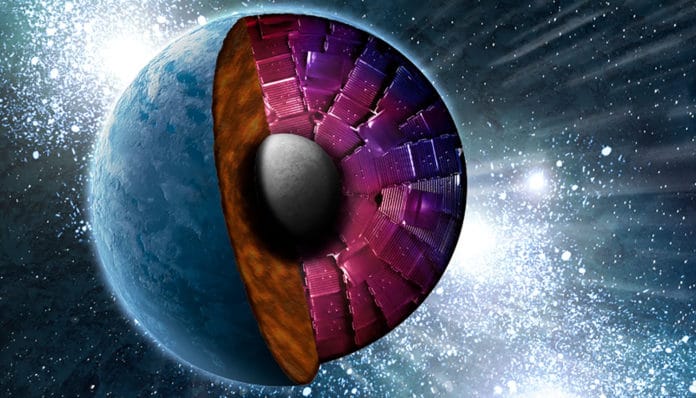With the importance of iron in planetary interiors, it is essential to determine physical properties at extreme pressure and temperature. The pressure and temperature conditions at which iron melts can tell about the size of the liquid metal core. It is an essential factor for understanding the potential for generating a radiation-shielding magnetic field.
Using high-energy lasers at the National Ignition Facility and in situ x-ray diffraction, scientists at the Lawrence Livermore National Laboratory (LLNL) and collaborators have determined high-pressure melting curves and structural properties of pure iron up to 1,000 GPa, three times the pressure of Earth’s inner core.
Scientists performed several experiments to mimic the conditions observed by a parcel of iron descending toward the center of a super-Earth core.
Rick Kraus, LLNL physicist and lead author of the paper, said, “The sheer wealth of iron within rocky planet interiors makes it necessary to understand the properties and response of iron at the extreme conditions deep within the cores of more massive Earth-like planets. The iron melting curve is critical to understanding the internal structure, thermal evolution, as well as the potential for dynamo-generated magnetospheres.”
A magnetosphere is considered an essential component of habitable terrestrial planets. Earth’s magnetodynamo is generated in the convecting liquid iron outer core surrounding the solid iron inner core and is powered by the latent heat released during the solidification of the iron.
Through the experiments, the team determined the length of dynamo action during core solidification to the hexagonal close-packed structure inside super-Earth exoplanets. They also found that solidification kinetics at such extreme conditions are fast. It takes only nanoseconds to transition from a liquid to a solid.
Kraus said, “We find that terrestrial exoplanets with four to six times Earth’s mass will have the longest dynamos, which provide important shielding against cosmic radiation.”
“Beyond our interest in understanding the habitability of exoplanets, the technique we’ve developed for iron will be applied to more programmatically relevant materials in the future.”
“This experimental insight is improving our modeling of the time-dependent material response for all materials.”
Journal Reference:
- Richard G. Kraus et al. Measuring the melting curve of iron at super-Earth core conditions. DOI: 10.1126/science.abm1472
